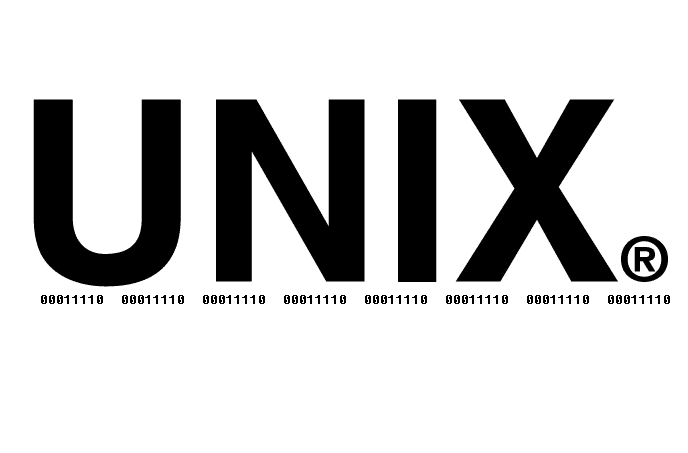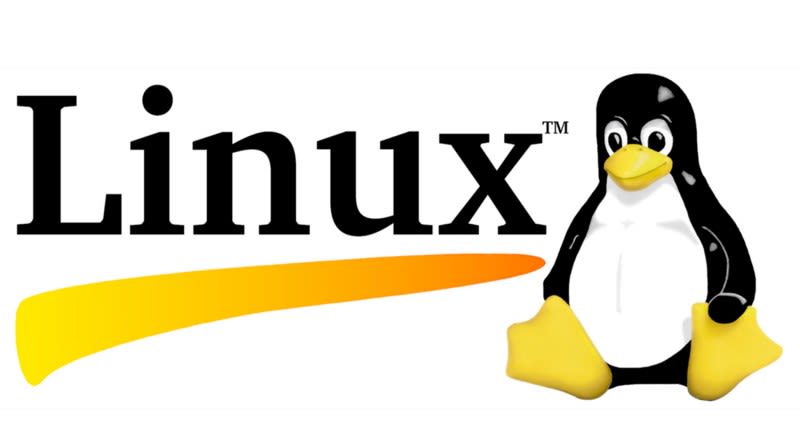I just started learning Linux and when I read a couple of blogs about Linux, many of them say that Linux is a Unix like Operating System. But when I Googled how Linux is Unix like operating system, I didn’t get any clear article that can give me the precise answer. After spending almost a day searching here and there I got my answer. So I thought let’s write the answer that I got, so that in future when anyone has the same question, he/she should not face the same trouble that I faced. 😊
The Questions that arise in my mind.
1. How Linux is Unix like Operating System ??
2. Is there any similarities between both of them ??
3. Is Unix share any code with Linux ??
4. Is Linux Inspired by Unix concepts ??
So let’s get the answers… 😉
Born of The Unix Operating System
If you wanna understand the relationship between Unix and Linux, then you must know about the birth of Unix.
In Mid 1960s MIT, Bell Labs, and General Electronic were developing a new operating system called Multics, a time-sharing operating system for a GE-645 mainframe computer.
While Multics introduces several big innovations, it also addresses some problems. Though Multics was a pretty powerful and feature-rich operating system, it was not easy to use it and also it was big in size.
So Small team of programmers of Bell Labs decided to use their experience of Multics and create a new operating system called Unics. While solving the problems of Multics, they also introduce some new features in the Unics operating system. So you can also say that Unics was the upgraded version of Multics.
In 1970s, team named the Operating system Unics (Uniplexed Information and Computing Service), it was closly derived from its predeccor Multics, which stands for (Multiplexed Information and Computer Services). Later Unics renamed with **Unix.
In the initial days, Unix was a single-tasking system. The first version of Unix was written in Assembly language. After the birth of C language, Unix team decided to rewrite the whole operating system with the use C language. C makes it unique from all other operating systems in the market. After rewritten in C, Unix became much more powerful, it also supports Multi-tasking,Multi-user, and Networking capabilities.
In the 1970s, operating systems were rarely portable. Due to their low-level source language, the operating systems were tightly linked to the hardware platform for which they were made. But after the rewritten in C language, Unix could now be ported on many hardware architectures.
Due to its tremendous power, portability, networking, multi-tasking, and multi-user capabilities, Unix became very popular in universities, academics, research centers, and in offices. Many of the concepts that were introduced in Unix are still widely used.
The Birth Of Linux and Open Source
Through the 1970s and 80s, nearly every major university, academy, and research-center use Unix in their computes. As Unix gained popularity, its commercial business also rises up.
But Unix was not open source, you have to purchase the license from the owner AT&T if you wanna use it. Also, you could not have access to the source code of the Unix. That means you cannot modify the operating system according to your need.
Just like Windows and macOS, you cannot have access to the source code of the operating system. You can just use the same operating system as they give it to you.
As time grows up, programmers want the more open environment of the operating system, on which they can modify anything and everything according to their need. They want complete control of the operating system. And the response to this gave birth to Linux.
Linus Torvalds was a student studying Computer Science at the University of Helsinki. Linus used Unix at the university on a daily basis. He was really amazed and inspired by the power and features of Unix, but as Unix was a proprietary OS, He thought to develop his own operating system.
Basically, he created the kernel (the heart of the operating system) and named it Linux. But after creating the kernel, Linus open-sourced it. Because it was a hobby, not a commercial product and he wants to see what others think of it. Means now anyone can get the kernel code and read it, use it, modify it, without any worry. And unknowingly he changes the world of the operating system forever. He finished the first version of the kernel in 1991. The first kernel was made for 32-bit system architectures.
But as we all know Kernel is a part of the operating system, for a complete working operating system, Linus Torvalds needs some software to run on it. Luckily, Richard Stallman, a computer enthusiast created a team of programmers devoted to free software, he called this the Free Software Foundation. The Free Software Foundation believed in making software which is free to learn, modify, and distribute. They gave full access to source-code so that others can help in improving that. The Free Software Foundation distributes free software under the GNU GPL (General Public License).
The Free Software Foundation created a bunch of Softwares like Text Editor called Emacs, Command-Line Interface called Bash. In 1991, the only thing that the Free Software Foundation was missing to make it fully-fledged Operating System was the Kernel. But after Linus Torvalds created the Kernel and open-sourced it, the dream of Richard Stallman of free software comes true and Linux became the world’s first free and Open-Source Operating System.
As Linux Kernel is open-sourced, many Programmers, enthusiast, and hobbyists access the source code and helped to make it more reliable, secure, and feature-rich. One after another person join the community and they all contribute to making it better in any manner they can. Today Linux has one the largest community in the world. And it is the most secure and widely used operating system worldwide.
Today almost 28 years passed but still Linus Torvalds openly work on Linux. But it’s now an effort of community that makes Linux, world’s most Powerful, Reliable, Feature-rich, and Secure Operating System. Since 1991, more than 14,000 developers from around 1,300 companies including big tech giants like Intel, Samsung, IBM, Red Hat, Linaro, and SUSE, contributed in Linux Kernel.
Today Linux is available for almost every platform including Pcs, smartphones, embedded devices, Server, supercomputers, mainframes, etc. Android kernel is based on Linux, World’s top 500 supercomputers are powered by Linux, Nine out of Ten websites that runs on the internet is powered by Linux servers (including Google, Amazon, Facebook, Instagram). Due to its secure and open-source nature, many government organizations, universities, research centers and academics accepting it widely.
As kernel is free to use, modify and distribute many people downloaded it and by using it they created their own version of the Linux operating system. The different versions of the Linux operating system are also called Linux distributions or Linux distro (in short). Today distrowatch.com lists 312 unique Linux distributions available in the market. Majority of them are free like Ubuntu, Fedora, Mint, CentOS, Debian, and some are paid, which provide support on free distributions like Red Hat Enterprise.
Similarities between Linux and Unix
3. Is Unix share any code with Linux ??
- No!! Unix doesn’t share any code with Linux.
1. How Linux is Unix like Operating System ??
- Ya, that’s true that Linux doesn’t share any code with the Unix. But the Linux kernel is moreover designed like Unix kernel. As consciously Linus Torvalds wants the operating system that behaves like Unix. You can also see that many Linux concepts were inspired by Unix.
4. Is Linux Inspired by Unix concepts ??
Yes, Linux is deeply inspired by some Unix concepts. Like utilizing small building blocks to produce something of bigger value. It means writing small programs that do one thing and does it well. Later, those programs are combined with the mechanism known as “Pipes” and “redirection”, so the output of one program becomes input for another program and as the data flows, something bigger value is achieved as a final result.
As both Linux and Unix follow POSIX (Portable Operating System Standards), both are a portable operating system.
Same as Unix, Linux is also based on Multi-User,Multi-tasking, Security and Networking concepts.
Just like Unix, Linux also has really strong security features. Which makes it one of the most secure operating systems in the world.
So I hope you get the answer to your WHY LINUX IS CALLED UNIX LIKE OPERATING SYSTEM ?? But still If you have any questions please feel free to ask me. And If I misses something please tell me that, I'll love to learn from you. And believe me learning flutter will be one of the best choices you ever make.










Top comments (2)
Hey Jay, nice you started to learn about Linux. Let me please "tweak" a few concepts:
First, Linux is only a kernel. A kernel without tools, libraries, compilers... is not an Operative system. Historically this was accomplished thanks to the GNU Operative system. People tend to forget this part of the Linux History, but it was thanks to the Free Software Fundation's GNU project why Linux became what it is today. One of the very few distributions that respect that is still Debian GNU/Linux (very close to the FSF).
Another fun fact: The name “GNU” is a recursive acronym for “GNU's Not Unix.”.
There are a few Unix Operative systems and none of them use Bash as the default command line interface. An example, BSD family uses tsch, ksh or ash and other Unixes also use csh and sh. But not bash.
What makes both Unix and Linux portable, is Portable Operating System Interface (POSIX ). This is more about compatibility between operative systems and nothing related to USB drives.
All in all, good writing! keep it up!
Thanks, Sir, to clarify my concepts. I'll try to update the article as well. Please Suggest me if you have any good resource for learning Linux.